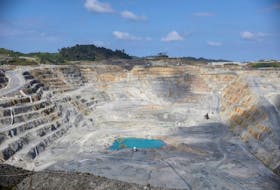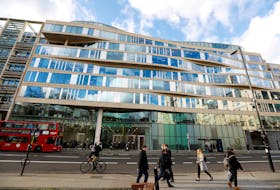Data centres, including miners for Bitcoin and other cryptocurrency, currently account for about 13 megawatts of active power demand in Labrador.
The province’s Public Utilities Board (PUB) was told this week there’s now roughly 275 megawatts of additional demand in the queue.
It won’t automatically all come online and result in a huge addition to the electrical system load this year, or next. There are review periods required for Newfoundland and Labrador Hydro and limitations on available transmission.
But the demand is there and it is growing.
“It’s quite significant,” Dawn Dalley, Newfoundland and Labrador Hydro’s vice-president of regulatory affairs and corporate services, said while offering testimony Wednesday at a PUB hearing.
RELATED STORIES:
Power sucking Bitcoin ‘mines’ spark backlash
WANGERSKY: Gambling on demand that may never materialize
‘Energy hunters’: Bitcoin miners search for cheap, innovative energy sources
Data businesses are expressing an interest and willingness to “take what’s available,” she said, and are requesting new transmission infrastructure to make more power available to them in Labrador, locating wherever the feed of power is possible.
They just want low power rates.
The rate for general service on the Labrador interconnected system, for example, is roughly two cents Canadian per kilowatt hour. That’s cheap. And the area is nice and cold to boot — so there are savings for data miners on air-conditioning costs, given that the data processors generate heat.
In describing the interest level and nature of the businesses, Dalley offered the example of one customer who was into negotiations for power supply. They asked Hydro simply how much power they could get, as opposed to offering any fixed number the business would need. “We’ve told them we can serve them at 7.75 megawatts and that’s what they’re pursuing,” she said.
Hydro is fielding multiple calls “probably daily, or close to daily” from interested companies looking for power, she said.
There are five existing data centre businesses in both Labrador West and Labrador East. The general category of business includes different models with different needs, Hydro representatives said.
There are large, single-point energy users, in warehouse-like settings; users with multiple former-retail locations together in a specific area; and there can be businesses set up scattered in residential space throughout a grid.
The businesses can also change rapidly, with less time required — not the construction and commissioning time you would have with more traditional, large power users such as the iron mines of Labrador West.
“And again, by way of example, I’ll use a general customer in Labrador East who started with … I’m going to (say) … between five and 10 megawatts of service with us probably 18 months ago. And they have subsequently purchased various commercial properties and converted them to small data centres,” Dalley said, describing how growth of existing businesses is contributing to greater overall power demand for the utility.
Hydro has been working to get a clearer picture of what the options are in handling the demand.
President Jim Haynes told the PUB that data centres are something all of North America has been forced to consider in greater detail.
He said there has been a review of provincial legislation by Hydro in terms of what could potentially be applied to data centre applications, given that other jurisdictions have placed restrictions on new data centres.
“We do not see where we can actually come up and arbitrarily say data centres need not apply,” Haynes told the provincial regulator. “We would have to look at them one by one, and we are.”
The number online to date is small, largely because of limitations in transmission and, in some cases, supply.
On Friday, a spokeswoman for Newfoundland and Labrador Hydro said that while the utility has a duty to serve customers, meeting the existing requests for firm power would require new capital spending.
The construction of new transmission lines and upgrades to the existing system would mean review and input from the regulator. And any new transmission project with a capital cost will take at least 18 months to two years to complete, according to Dalley and Haynes.
There’s a lot to be considered.
What will a rush of new power use in Labrador mean for plans to sell cheap recall power from Churchill Falls for a higher price outside the province?
If rates rise in Labrador in the future, will data centres stick around to help pay the bills for upgrades — yet to be approved and even sought in some cases — required to accommodate them?
Dalley said the issues are known and talked about with all of the new applicants for Labrador power, and have also been discussed with the provincial government.









